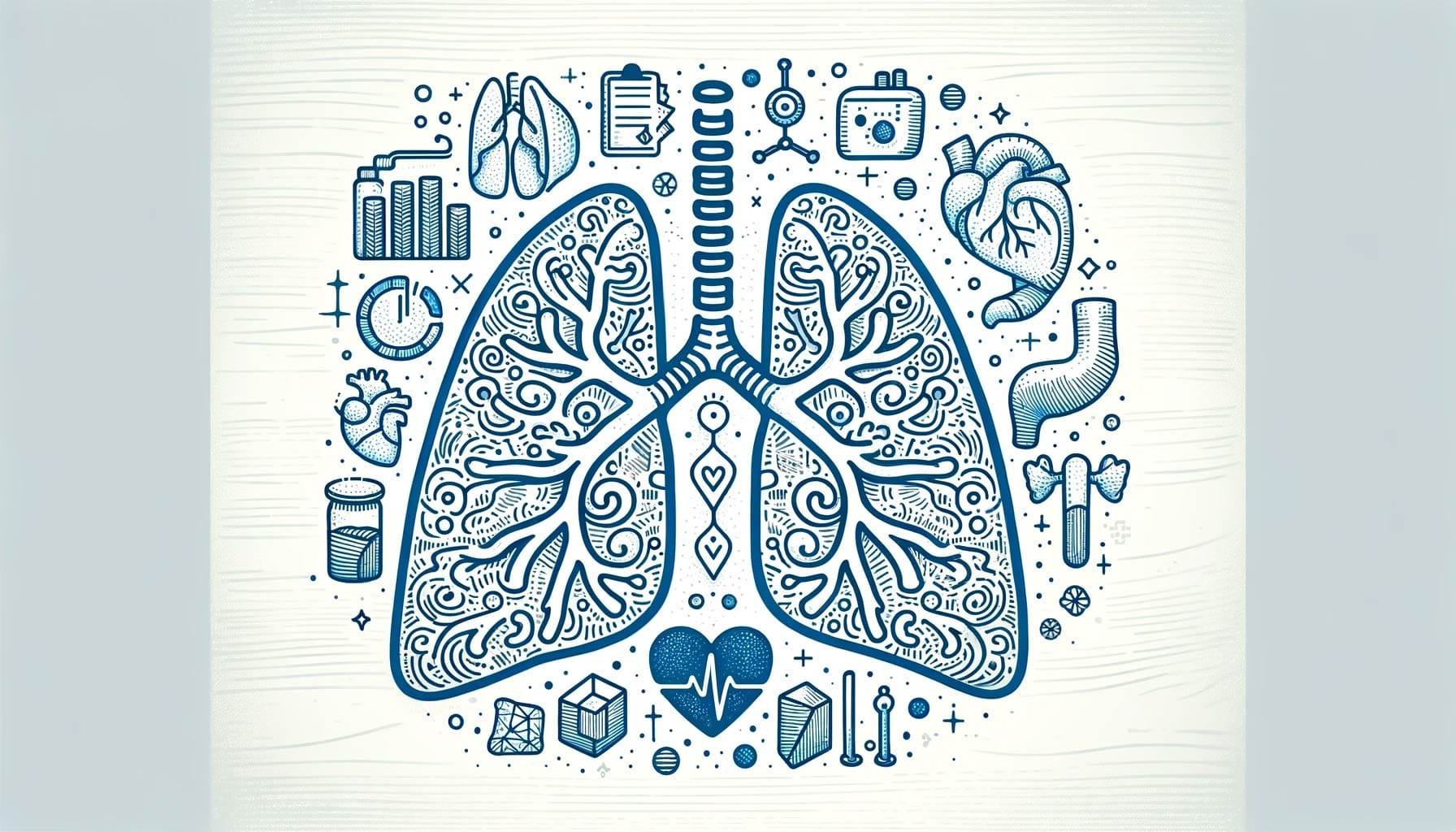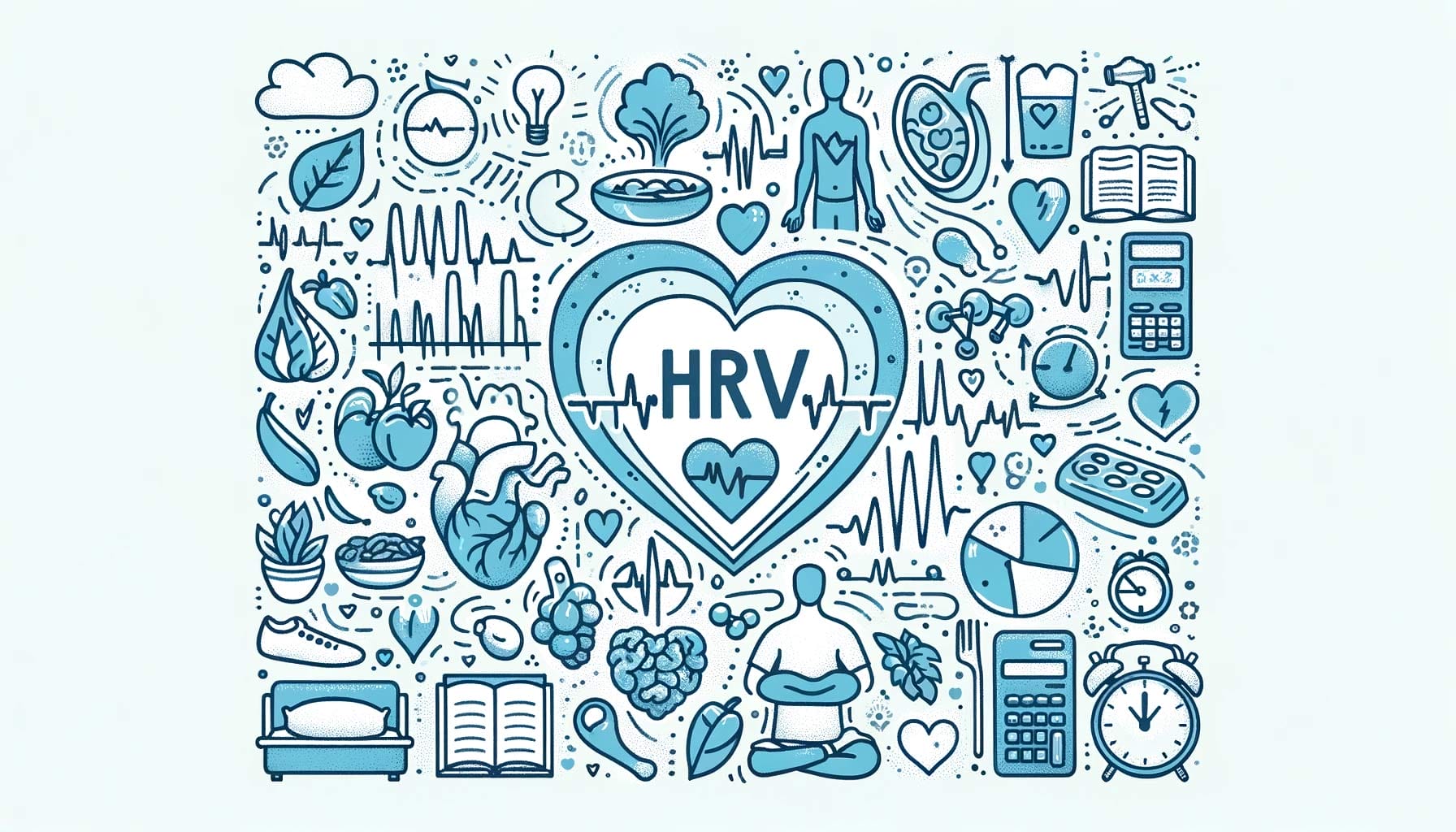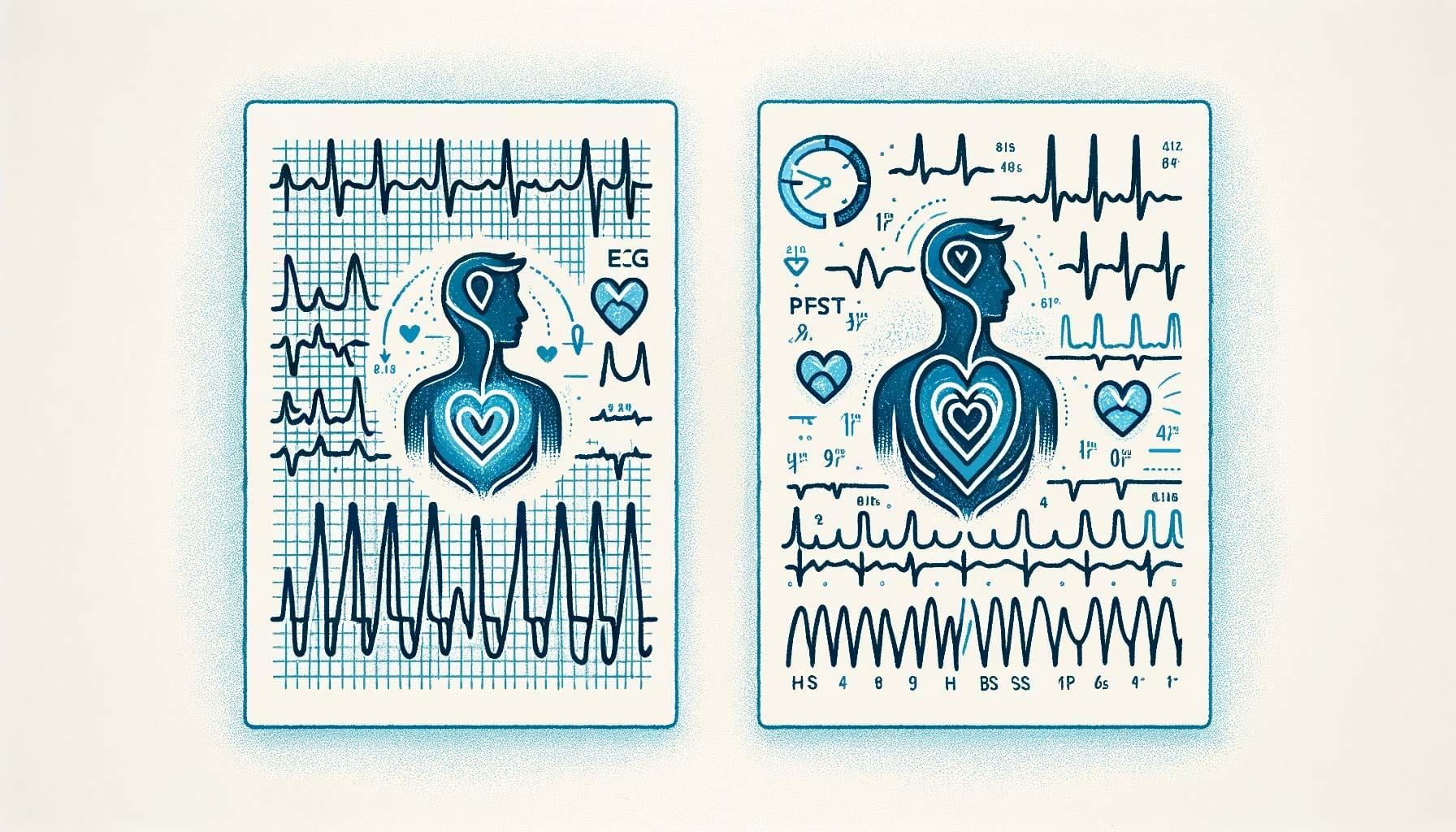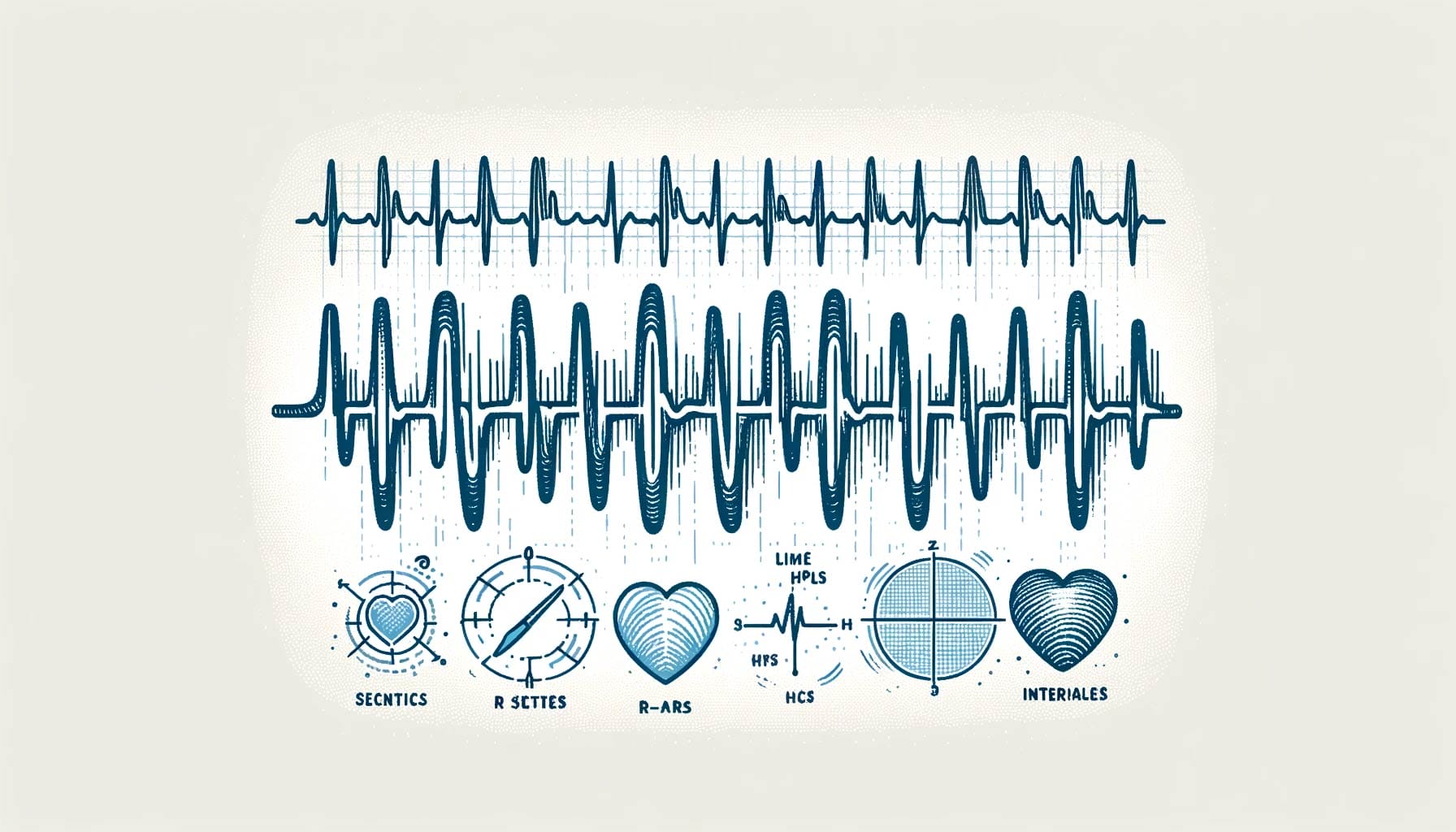Understanding Respiratory Health Through HRV
The application of Heart Rate Variability (HRV) in respiratory health offers a new dimension in understanding and managing respiratory diseases. This in-depth exploration focuses on how HRV, as a reflection of autonomic nervous system activity, provides insights into respiratory function and health.
Respiratory diseases, such as asthma and chronic obstructive pulmonary disease (COPD), can significantly impact the autonomic nervous system, often reflected in altered HRV patterns. By analyzing HRV, healthcare providers can gain a deeper understanding of the physiological impact of these diseases and monitor the effectiveness of various treatments.
“In the intricate interplay of breath and heart, heart rate variability stands as a vital gauge, illuminating the autonomic narratives in respiratory health and disease.”
In the context of respiratory health, HRV serves as a non-invasive tool to assess the balance between sympathetic and parasympathetic nervous system activity. This balance is crucial, as it can be disrupted in respiratory conditions, leading to complications and affecting overall health. By studying HRV patterns in patients with respiratory diseases, clinicians can identify early signs of disease exacerbation, adjust treatments, and improve patient outcomes.
For foundational knowledge on HRV and its health implications, our Ultimate Guide to Heart Rate Variability provides a comprehensive overview.
HRV’s Role in Respiratory Disease Management

HRV analysis is increasingly recognized as an important component in managing respiratory diseases. In conditions like asthma, where airway constriction and inflammation are common, HRV can help in assessing the severity of the condition and the body’s response to treatment.
“HRV sheds light on the intricate relationship between respiratory health and the autonomic nervous system, guiding effective disease management.”
In COPD, reduced HRV is often observed, indicating an imbalance in autonomic nervous system function. Monitoring HRV in COPD patients can provide valuable information about their cardiovascular risk, as respiratory diseases are often accompanied by comorbid heart conditions.
Moreover, HRV can also be used to evaluate the impact of pulmonary rehabilitation programs. These programs, designed to improve respiratory function and overall health, can positively influence HRV, reflecting improvements in autonomic balance and physical health.
HRV Monitoring: Enhancing Patient Care in Respiratory Diseases

The advancement of wearable HRV monitoring technology has significantly impacted the management of respiratory diseases. These devices allow for continuous monitoring of HRV, providing real-time data on patients’ autonomic function and overall health status.
Continuous HRV monitoring is particularly beneficial for patients with chronic respiratory conditions. It enables healthcare providers to track changes in their health status, potentially identifying exacerbations or complications early. This early detection is crucial for timely interventions, preventing severe episodes and hospitalizations.
“Continuous HRV monitoring in respiratory care offers a window into the patient’s daily health, transforming reactive care into proactive management.”
Moreover, HRV data can guide the customization of treatment plans. By understanding each patient’s specific HRV patterns, clinicians can tailor medications, breathing exercises, and lifestyle changes to better manage their condition. This personalized approach not only improves disease management but also enhances patients’ quality of life. Delve into the complexities of measuring heart rate variability in our detailed article, “Unraveling the Intricacies of HRV Measurement Techniques“.
The Impact of Lifestyle and Environmental Factors on Respiratory Health and HRV

Lifestyle and environmental factors play a significant role in respiratory health, and their impact is often reflected in HRV. Factors such as air quality, smoking, diet, and physical activity can significantly influence respiratory function and, consequently, HRV. Learn about the vital link between heart rate variability and nutrition in our insightful article, “HRV and Nutrition: Exploring the Heart-Gut Connection“.
Poor air quality and smoking are known to exacerbate respiratory conditions and can lead to decreased HRV, indicating increased stress on the body. Conversely, a healthy lifestyle, including a balanced diet and regular exercise, can improve respiratory function and HRV. These positive lifestyle changes can be particularly beneficial in managing chronic respiratory diseases. Explore the role of heart rate variability in understanding sleep patterns in our insightful article, “HRV in Sleep Research: Unraveling the Mysteries of Rest“.

Environmental and lifestyle modifications, informed by HRV monitoring, can therefore be integral parts of comprehensive respiratory disease management plans. By addressing these factors, patients can improve not only their respiratory health but also their overall autonomic balance and well-being.
“In respiratory health, every breath matters – and HRV serves as a guide to navigate the environmental and lifestyle paths that shape our breathing.”
This part of the article offers a detailed exploration of the role of HRV in understanding, monitoring, and managing respiratory health and diseases. It highlights the importance of HRV in providing insights into the autonomic implications of respiratory conditions and the potential benefits of continuous HRV monitoring in enhancing patient care. The article is designed to be informative for both healthcare professionals and individuals interested in the intersection of respiratory health and HRV.
Challenges and Opportunities in HRV Application for Respiratory Conditions

While HRV presents significant opportunities in managing respiratory diseases, it also poses certain challenges. One of the primary challenges is the variability in HRV readings due to individual differences, medication effects, and comorbid conditions, which require careful interpretation. Gain insights into how drugs affect heart rhythms by reading our informative article, “HRV and Pharmacology: Drug Effects on Heart Rhythms“.
“Navigating the complexities of HRV in respiratory health unveils a path to more nuanced and effective patient care.”
Addressing these challenges involves a multidisciplinary approach, where respiratory specialists, cardiologists, and primary care providers collaborate. This collaborative effort ensures a comprehensive understanding of each patient’s unique health profile, allowing for more accurate interpretation of HRV data and tailored treatment strategies.
Future advancements in HRV technology and data analysis are expected to overcome some of these challenges. Improved algorithms for HRV analysis and more sophisticated wearable devices could provide clearer insights into the autonomic function in patients with respiratory diseases, leading to better disease management and patient outcomes.
The Future of HRV Research in Respiratory Health

The field of HRV research in respiratory health is continually advancing, with new studies expanding our understanding of HRV’s role in various respiratory conditions. Future research is likely to explore deeper into the long-term implications of respiratory diseases on autonomic function and the potential of HRV-guided personalized medicine. Discover how heart rate variability is revolutionizing personalized medicine in our article, “HRV and Personalized Medicine: Tailoring Health Strategies for Individual Needs“.
“As we delve deeper into the breath of life, heart rate variability research in respiratory health opens new pathways, promising a future where personalized care and holistic well-being breathe in unison.”
Emerging trends in HRV research point towards integrating HRV data with other health metrics to provide a more comprehensive view of respiratory health. This integrative approach could lead to the development of more effective, holistic treatment plans that address not only respiratory function but also the overall autonomic balance and well-being.
Additionally, there is a growing interest in exploring the use of HRV in pediatric respiratory conditions. Understanding HRV patterns in children with respiratory diseases could improve early intervention strategies and long-term disease management.
Conclusion: Breathing New Life into Respiratory Care with HRV

HRV has emerged as a key tool in understanding and managing respiratory health. By offering insights into the autonomic nervous system, HRV enhances our understanding of respiratory diseases and their broader health implications. Its application in clinical settings is transforming the way respiratory conditions are monitored and managed, providing a more patient-centered approach to care.
As the field of HRV research in respiratory health continues to grow, its potential to improve patient outcomes and quality of life becomes increasingly evident. HRV is not just a metric; it’s a vital component in the future of respiratory health care, offering new pathways to better breathing and overall well-being.
You Might Also Be Interested
- 📚 Delve into our comprehensive HRV Article Collection for insightful perspectives on Heart Rate Variability (HRV).
- 🔍 Learn how the advanced features of Fibion Emfit & Fibion Vital can aid you in your HRV research.
- 📅 Planning an HRV measurement and analysis? For a chat with our HRV expert, book a session with Dr. Miriam Cabrita.
Frequently Asked Questions About This Topic:
How does HRV provide insights into respiratory function and health? +
HRV reflects the balance of the autonomic nervous system, which can be disrupted in respiratory conditions. Analyzing HRV patterns helps in understanding the physiological impact of respiratory diseases and monitoring treatment effectiveness.
What is the role of HRV in managing respiratory diseases like asthma and COPD? +
HRV can help assess the severity of respiratory conditions and the body’s response to treatment. In diseases like COPD, reduced HRV indicates an imbalance in autonomic function and higher cardiovascular risk.
How does continuous HRV monitoring enhance patient care in respiratory diseases? +
Continuous HRV monitoring allows for real-time tracking of autonomic function in chronic respiratory patients, aiding in early detection of exacerbations, guiding treatment personalization, and improving overall disease management.
What impact do lifestyle and environmental factors have on respiratory health and HRV? +
Factors like air quality, smoking, diet, and physical activity influence respiratory function and HRV. Positive lifestyle changes can improve both respiratory health and HRV, aiding in disease management.
What challenges are associated with using HRV for respiratory condition management? +
Challenges include variability in HRV readings and the need for multidisciplinary collaboration for comprehensive patient care. Advancements in HRV technology are expected to overcome these challenges.
What future developments are expected in HRV research for respiratory health? +
Future research may focus on integrating HRV data with other health metrics for comprehensive respiratory health assessment, exploring HRV in pediatric respiratory conditions, and utilizing HRV in personalized medicine.











